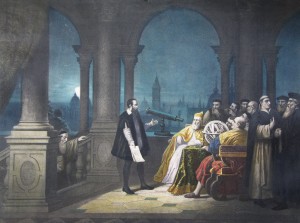I believe that one can trace a very logical historical path from the rise of modernism through to the development of postmodernism. However, I probably won’t keep these article in strict chronological order. Be prepared for me to hop and skip around!
Before I can talk about postmodernity, I need to establish where we’re coming from. And this means talking about the successes of modernism.
I mentioned in my introduction that I see the the Swedish company Ikea as representing the epitome of modernism. Ikea manages a seamless blend of form and function to channel the individual desires of millions of people into achieving the goals of the company.
This is ne of the greatest achievements of modernism: the ability to create large scale organisations dedicated to achieving a single goal.
Consider, for example, Henry Ford. Before his company revolutionised the industry, cars were manufactured by hand. With the introduction of the assembly line, each component was constructed or attached by one individual or team. The workers didn’t need to know how to build an entire car, but just how to do their assigned task over and over again. The efficiency gains were staggering. While a car had previously taken more than 12 man-hours to assemble, now it could be done in a mere ninety minutes.
But interestingly enough, the history of the production line goes back a long way before Henry Ford. In the early 19th century the British Navy needed to make over 100,000 wooden blocks a year to equip her ships, and all of them needed to be manufactured by hand by craftsmen. This process was dramatically overhauled by Marc Isambard Brunel, who designed a series of steam powered machines, each of which could perform one element of the block-making process. When working together, and operated by relatively unskilled labour, blocks could be manufactured with significantly improved quality and speed. This was the first production line in England, although the concept did not spread to other industries for decades.
The key features of this system, as with Ford’s, were a carefully designed manufacturing process and the assignment of simple, repetitive tasks to unskilled, interchangeable workers.
The other pioneers of this approach were armies. Prior to large corporations, armies were the only structure that organised on this scale, and with the same features. Armies have a hierarchical command structure, a single purpose, and make heavy use of interchangeable, low value units. Military education is a machine for producing soldiers. The individual soldier in a war does not need to see the big picture, or understand strategy, but merely needs to perform their assigned task correctly and efficiently. And if one, or a hundred, or ten thousand are killed, then they can be replaced with identically trained units. To the General, there is little difference between an infantryman and a gun carriage. I think of Napoleon as one of the foremost proponents of this approach, with his Levee en Masse, a startling ability to raise, train and equip vast armies, with which he could overwhelm the smaller professional armies of other European states.
These are some of the key characteristics of modernism: carefully designed processes, efficiencies of scale, and the use of interchangeable workers. And these characteristics were so successful that in the 20th century they spread out of the factory and into the office, the store, and the restaurant. Consider your local Tim Horton’s franchise, for example. Every Tim Horton’s in the country follows the same process for preparing a ham sandwich; each step has a fixed number of seconds allocated, and these times are printed directly above the food preparation area. A franchise, at it’s heart, is a set of carefully designed processes that can be run by interchangeable staff with minimum training.
These economies of scale have brought us affordable cars, quick service at the coffee shop, and many other impressive achievements. Killer diseases such as smallpox were eradicated through large scale, efficient vaccination programs. The introduction of city-wide sanitation infrastructure in London in the 19th century dramatically curtailed incidences of Cholera. And the Prussian education system, which emphasises a standardised curriculum and teacher training methodology, has been adopted worldwide.
So although in later articles I will outline modernisms darker side, I want to make clear that I do not see it as ‘bad’ or ‘good’. It is at it’s core a set of organisational tools. What we as a society choose to do with these tools is up to us.
 It’s a fascinating story with all the elements of a gripping novel. Colorful personalities, political intrigue, the misunderstood genius facing down powerful forces arrayed against him, and culminating in a thrilling courtroom drama.
It’s a fascinating story with all the elements of a gripping novel. Colorful personalities, political intrigue, the misunderstood genius facing down powerful forces arrayed against him, and culminating in a thrilling courtroom drama.